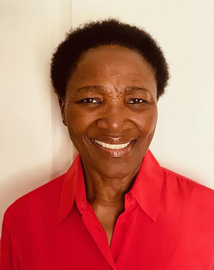The Latin root word for the term assessment is assidere which means to sit down beside (Stefanakis, 2002; Swaffield, 2010). The picture of an expert sitting down beside a novice exemplifies the act of providing needed structure to facilitate learning success. In the past decades, this learning-centric focus of the meaning of assessment seemed to have taken a back seat to the accountability focus of assessment as a measurement of student knowledge and ability. If measuring student knowledge and ability is the goal of the accountability paradigm of assessment, grades are its currency. The orientation of the university teacher as a partner in student learning has shifted to that of a judge of how much knowledge a student has acquired (Farias et al., 2010). Grades are good, but a problem arises when students are oriented to associate assessment with grades more than learning.
Then came the pandemic. The seismic effect of COVID-19 resulting in an unprecedented move to remote instruction refocused attention on improving assessment practices to alleviate student stress and anxiety, emphasize learning, and redress inequities in student success. In June 2020, the National Institute for Learning Outcomes Assessment (NILOA) conducted a survey to examine the assessment-related changes that institutions made in response to the shift to emergency remote instruction due to the pandemic (Jankowski, 2020). Out of the total 813 responses received, 787 respondents—97%–indicated that they made changes to their assessments practices due to the pandemic. Furthermore, the most-frequently mentioned change pertained to “modifications to assignments and assessments and flexibility in assignment deadlines” (p. 6).
Given the current mindset to modify assessments, the question is, What are the components of robust, comprehensive and holistic assessment practices? The answer to this question requires an expansive notion of what assessment entails (Stanger-Hall, 2012). The simple classification of assessment as formative and summative is helpful. However, in the current pandemic era with the attendant need to address concerns about inequities and include student voices in assessment, it is imperative to expatiate the erstwhile classification. This is how:
- I present 8 components of a viable assessment practice in the Comprehensive Assessment of Student Learning resource. In addition to the classification of assessment as formative and summative, the components encompass assessment practices that are focused on providing options and choices to diverse students to demonstrate their learning in authentic and alternative situations (Burton, 2011; Montenegro & Jankowski, 2017).
- In the Reimagining Assessment resource, I present 7 strategies for rethinking tests and exams as a pathway to deeper learning. One criticism of summative assessment is that it happens at the end of a learning unit or course, students receive a grade which is an indirect evidence of learning (Suskie, 2009). A grade does not translate into the actionable feedback needed to improve learning and performance on subsequent exams. (Tan, 2013). The strategies point to the fact that students’ exam experiences can be intentionally modified to maximize the potential for learning beyond the test.
Using various types of assessments to facilitate the greatest possibility for diverse students to demonstrate their learning, not just their test-taking abilities, and reimagining exams as a pathway to learning could ease test-induced anxiety and stress. Consequently, the alleviation of exam stress and anxiety could be a collateral for reducing the incidences of cheating (Darby, 2020; Supiano, 2020).
References
Burton, K. (2011). A framework for determining the authenticity of assessment tasks. Applied to an example in law. Journal of Learning Design, 4(2), 20-28.
Darby, F. (2020). Seven ways to assess students online and minimize cheating. The Chronicle of Higher Education.
Farias, G., Farias, C. M., & Fairfield, K. D. (2010). Teacher as judge or partner: The dilemma of grades versus learning. Journal of Education for Business, 85, 336 – 342.
Jankowski, N. A. (2020). Assessment during a crisis: Responding to a global pandemic. Urbana, IL: University of Illinois and Indiana University, National Institute for Learning Outcomes Assessment.
Montenegro, E., & Jankowski, N. A. (2017). Equity and assessment: Moving towards culturally responsive assessment. Urbana, IL: University of Illinois and Indiana University, National Institute for Learning Outcomes Assessment.
Stanger-Hall, K. F. (2012). Multiple-choice exams: An obstacle for higher-level thinking in introductory science classes. Life Sciences Education, 11, 294-306.
Stefanakis, E. (2002) Multiple Intelligences and Portfolios. Portsmouth: Heinemann
Supiano, B. (2020). Students cheat. How much does it matter? The Chronicle of Higher Education.
Suskie, L. (2009). Assessing student learning: A common sense guide (2nd edn). San Francisco, CA: Jossey-Bass.
Swaffield, S. (2011). Getting to the heart of authentic Assessment for Learning. Assessment in Education: Principles, Policy & Practice, 18(4), 433-449.
Tan, K. (2013). A framework for assessment for learning: Implications for feedback practices within and beyond the gap. ISRN Education, 2013, 1-7.

Funmi Amobi is an instructional consultant in the Center for Teaching and Learning. She facilitates sparkshops for faculty in informal gatherings and by invitation to college and department meetings.

Leave a Reply